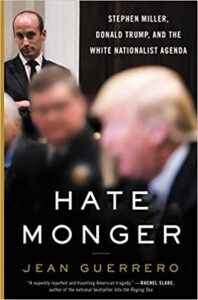Iowa, California, Lousiana, Greenland…
#ClimateEmergency
Hopeful thoughts from a climate correspondent.
“The climate emergency is very bad. Over the past few days, disasters have cascaded around the world. But no matter how dire the pandemic-climate-racial uprising emergency gets, there is never, ever a reason to give up.” -Eric Holthaus
On climate doom
Hi,
Over the past few days, disasters have cascaded around the world. More of California burned in a one-week span than in almost any other full year in recorded history. Hurricanes have battered the Caribbean and the US Gulf Coast. The strongest typhoon in North Korea’s history made landfall. Scientists unveiled doomsday updates from Greenland, Antarctica, and the North Pole.
Watching all this, I felt a familiar sense of despair settle in. When disasters are in the headlines, I often have a counter-intuitive response. My mind automatically races to the countless everyday changes in weather that go largely unnoticed, but in aggregate add up to civilisation-altering, fundamental changes that once manifest, become irreversible.
I find myself noticing the impulse to give in to climate doom.
This thread from my friend and former podcast co-host Jacquelyn Gill explains how this instinct is partly a result of privilege in climate spaces. It’s often easier to imagine the apocalypse than the systemic changes necessary in every aspect of society to steer us away from oblivion.
The climate emergency is very bad. It magnifies inequalities. It’s a manifestation of hundreds of years of injustice and erasure.
But if you find yourself thinking “we’re screwed”, here’s a gentle reminder to ask yourself who “we” is. This has been happening for a long time.
This week’s good news on climate
We need to move past the “we’re screwed” narrative on climate change and ecosystem collapse. Fast. A dead world is not our destiny.
Yes, the odds are against us as long as we stay on our current path. But we can and must radically change that path. We can do this, and we will.
We’ve reached the point in the pandemic-climate-racial uprising emergency that there are multiple versions of reality floating around and it’s very difficult to keep track of reality.
Hope is hard work.
and some people just aren’t willing to do it.
I’ve subscribed to the concept of atmospheric harm reduction. Harm reduction is a strategy that’s used to de-escalate violence and self-harm, and involves things like sanitised needle distribution or legalising and regulating marijuana.
The same applies to the climate emergency. Every tonne of carbon avoided through developing tough new habits, every climate denier voted out of office and replaced with an imperfect-but-better candidate, every difficult conversation that helps you articulate your ardent love for the world and everything that’s worth saving – all of those help make the world a measurably better place.
There are days when it will feel like you can’t go on, that all your work is pointless. But in those days remember that a better world is always possible. We can take breaks. We can endure setbacks. But we can never, ever give up. You were born just in time to transform the world.
https://thecorrespondent.com/652/on-climate-doom/86316088628-71047c4c
“…a true ideologue, a true fanatic.”
“(Jean Guerrero) describes the ideological arc of Miller’s life and investigates his ties to right-wing mentors and far-right groups. She adds, many are baffled at how someone so young with so little policy or legal expertise gained so much power.”
I remember, you know, the incredible anti-immigrant hostility that was pervasive in California at the time, which may be surprising to people because California is known as such a deep-blue state and kind of leads the charge against the Trump administration today. But in the ’90s, it was sort of ground zero, like a microcosm for what we’re seeing nationally today. There were unprecedented attacks on immigrants through a proposition called Prop 187, which, you know, targeted social services for children of undocumented migrants. It was later ruled unconstitutional. There was also attacks on bilingual education statewide. There were attacks on affirmative action.
And the Republican governor of California at the time, Pete Wilson, you know, was repeatedly railing against what he called the invasion at the border – the same language that you see Trump using today – and blaming all of the state’s fiscal problems on immigrants, you know, running these ads on television that I remember watching about how – you know, showing families coming across the border, and there’s this ominous narrator over the video saying, they keep coming.
And from my reporting, it became clear to me that Stephen Miller is truly a product of this environment. He was internalizing a lot of these white supremacist and racist narratives that were common in the state and acting them out, you know, in his high school.
-NPR’s Fresh Air
Important and necessary read–solid investigative reporting from former KPBS San Diego reporter and Emmy award winner Jean Guerrero.
“A vital book for understanding the still-unfolding nightmare of nationalism and racism in the 21st century.” –Francisco Cantu, author of The Line Becomes a River
‘Hatemonger’ Paints Trump Advisor Stephen Miller As A ‘Case Study In Radicalization’
LATimes
Guerrero told The Times that Miller, unlike Bannon and others surrounding the president, is not an opportunist or self-promoter but “a true ideologue, a true fanatic.” Much has been made of the question of what motivates Miller, 35, whose prior experience consisted mostly of PR work for C-list lawmakers before leveraging a single-minded obsession with immigration into the office of then-Sen. Jeff Sessions — and then into speechwriting for Trump’s nascent 2016 presidential campaign.
Guerrero’s book is an exhaustive investigation into not just the how, but the why. She continues to brave threats of violence after conducting more than 100 interviews and researching the darkest corners of the American consciousness to unpack a strange (but not rare) phenomenon: the radicalization of a privileged young white man — though this one, the descendant of Jewish refugees, grew up in an increasingly diverse Southern California.
Guerrero spoke with The Times over the phone from her home in San Diego, a conversation edited for clarity and length. By her account, Miller was primed and groomed — starved for attention, yearning for belonging, and fighting what was, then, a lonely war.’
I honestly believe that the most important reason Miller has been able to stay so long and have such an outsize impact is that he is a true ideologue, a true fanatic. More than anyone else in the White House, he believes that he is actually saving the world through what he is doing. Strategically that has worked out for him — and Trump has found whenever he takes a more moderate line on immigration or anything, he ends up getting ridiculed as weak, which Trump hates.
…nowhere in the book do I call Miller racist or xenophobic, or anything like that. We don’t know what is in a person’s heart with absolute certainty. I grappled with that. Neutrality is necessary for journalistic integrity, an integral pillar of our democracy, and we absolutely need that, but also this reluctance we’ve had as journalists to use these words has created space for white supremacists to operate with impunity.
What I tried to do in the book is show what Miller is doing and saying, and the white supremacist sources, so that people can draw their own conclusions. I did not write this book to tell you that Miller hates anyone. I can say, with the confidence of my reporting, that he is fluent in hate and deliberately traffics in hate and communicates with people who hate.
I think Miller is always going to have allies in the nativist movement and the white nationalist movement, he’s always going to find a place. He is very ambitious. … He’s told people his ultimate goal is to become a senator, and I wouldn’t be surprised if he ran for office somewhere. But I don’t think he’s allowed himself to envision an alternate reality where Trump doesn’t win reelection.
I don’t think Miller and everything he represents is going to go away after November. He’s going to continue to rally people around his ideas, which are not just his ideas.
The thing with Bannon and Donald Trump is, they’re out to con people. … Miller is accountable for his own actions and responsible for everything he’s done, but he was indoctrinated at a very young age into this idea that he needed to save the United States from this imagined threat of Black and brown people.
Full LATimes interview with Jean Guerrero and reporter Molly O’Toole:



